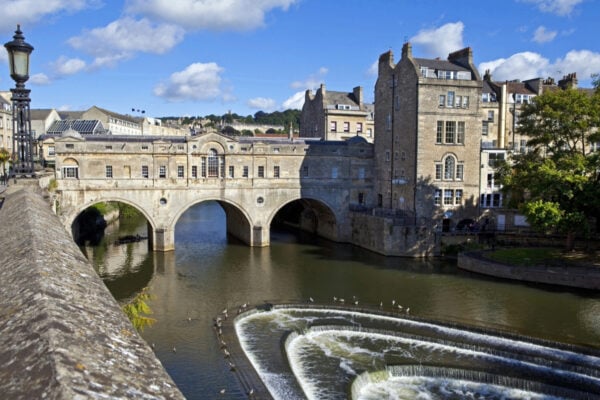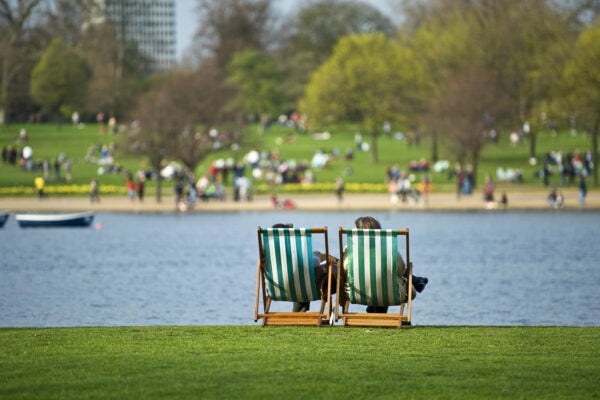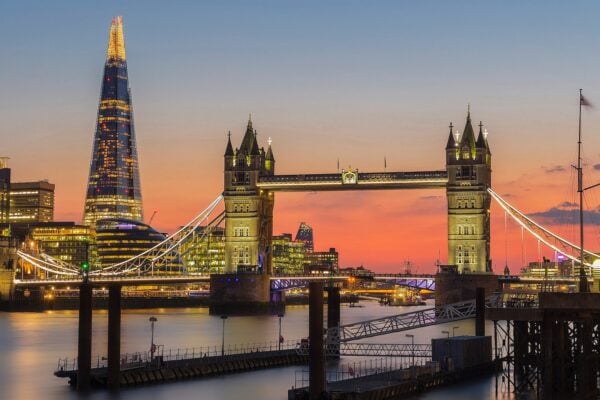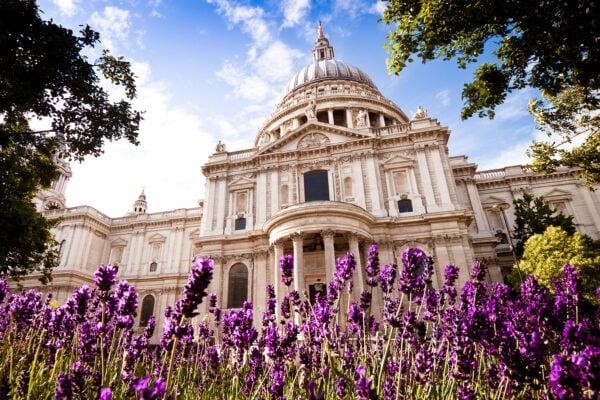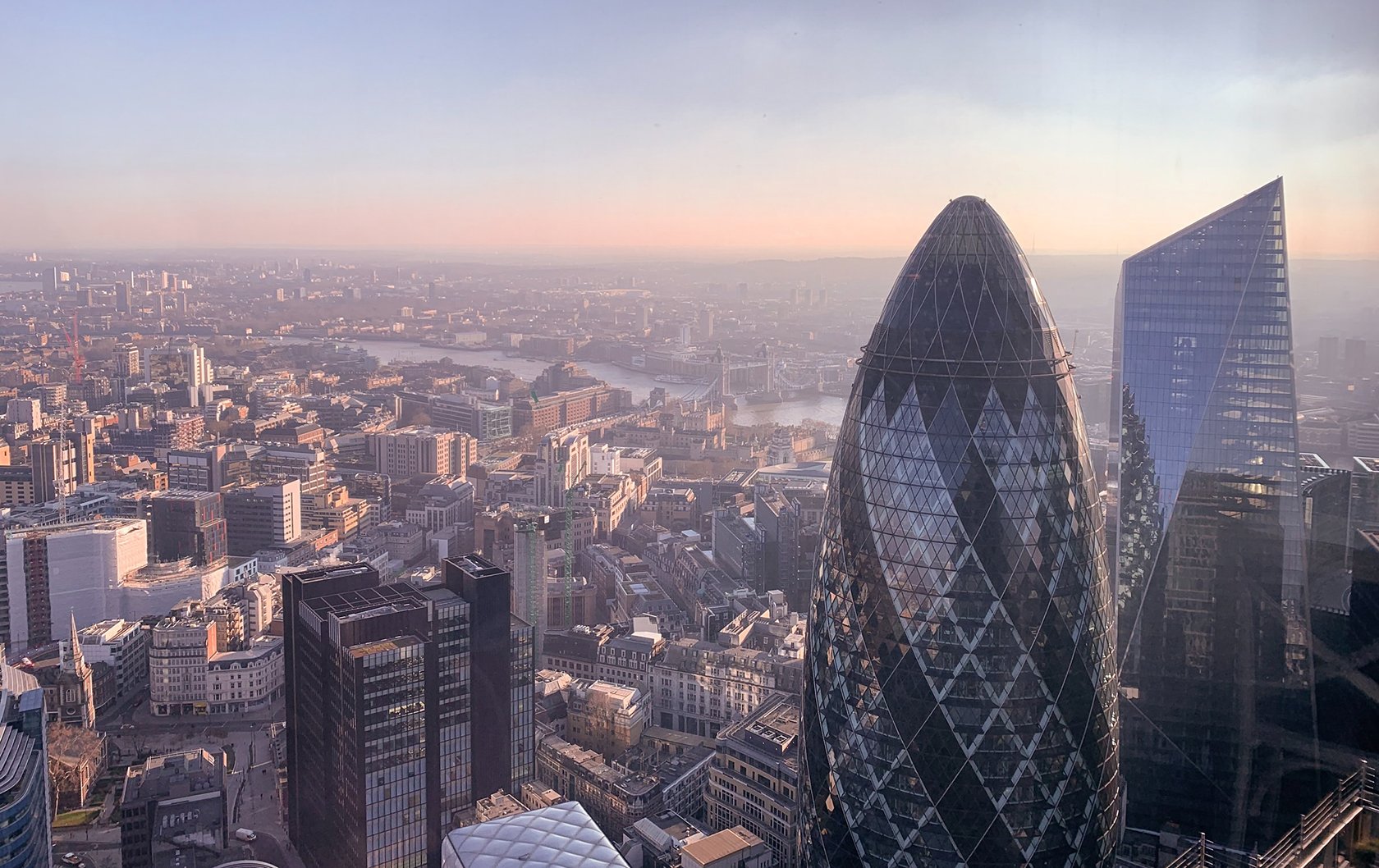
A view over the City of London (credit)
If you’re familiar with London you may know that it is utterly enormous, covering an area about twice the size of New York City or fifteen times (yes fifteen!) the size of Paris. Because of the extensive transport system, it may not seem quite so vast. Given the sheer size of the capital, it will come as no surprise that there is a wealth of history to discover in London. But first, you’d better get your Londons in order. Did you know there are actually two Londons?
This may seem confusing, but the area that we commonly refer to as London is actually known as Greater London, and it includes 32 boroughs and over 8 million people. The entire territory is governed by the Greater London Authority (GLA) which itself consists of the London Assembly and the Mayor of London, who handle everyday things like trash collection, transport and policing. This is the London where you’ll find Big Ben, the London Eye and the Tate. But one of these boroughs is the City of London, a much smaller piece of land with a much bigger history – and its own Mayor! But we’ll get to that.
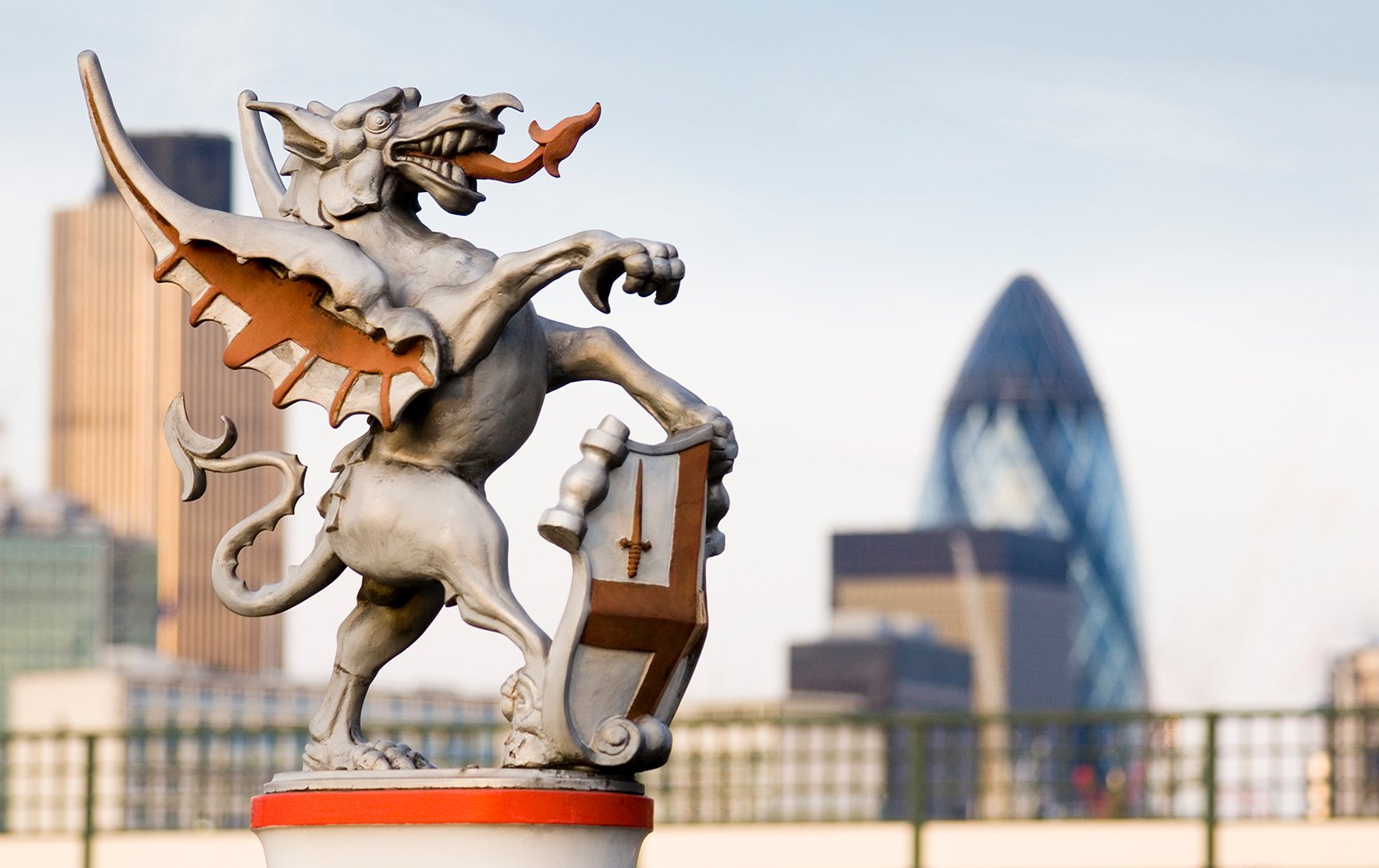
Dragon statues mark the entrance to the City of London
The story of the City actually begins more than 2,000 years ago with the settlement of Londinium, which became the capital of Roman Britain throughout most of the Roman Empire. Most history books put the founding of Londinium at 43 AD, but it was a Bronze Age settlement on the banks of the Thames River well before that. Moreover, in its earliest days was fairly vulnerable and often disputed. Its strategic position near a waterway made it a big prize for the ambitious Romans, but the city didn’t go down without a fight.
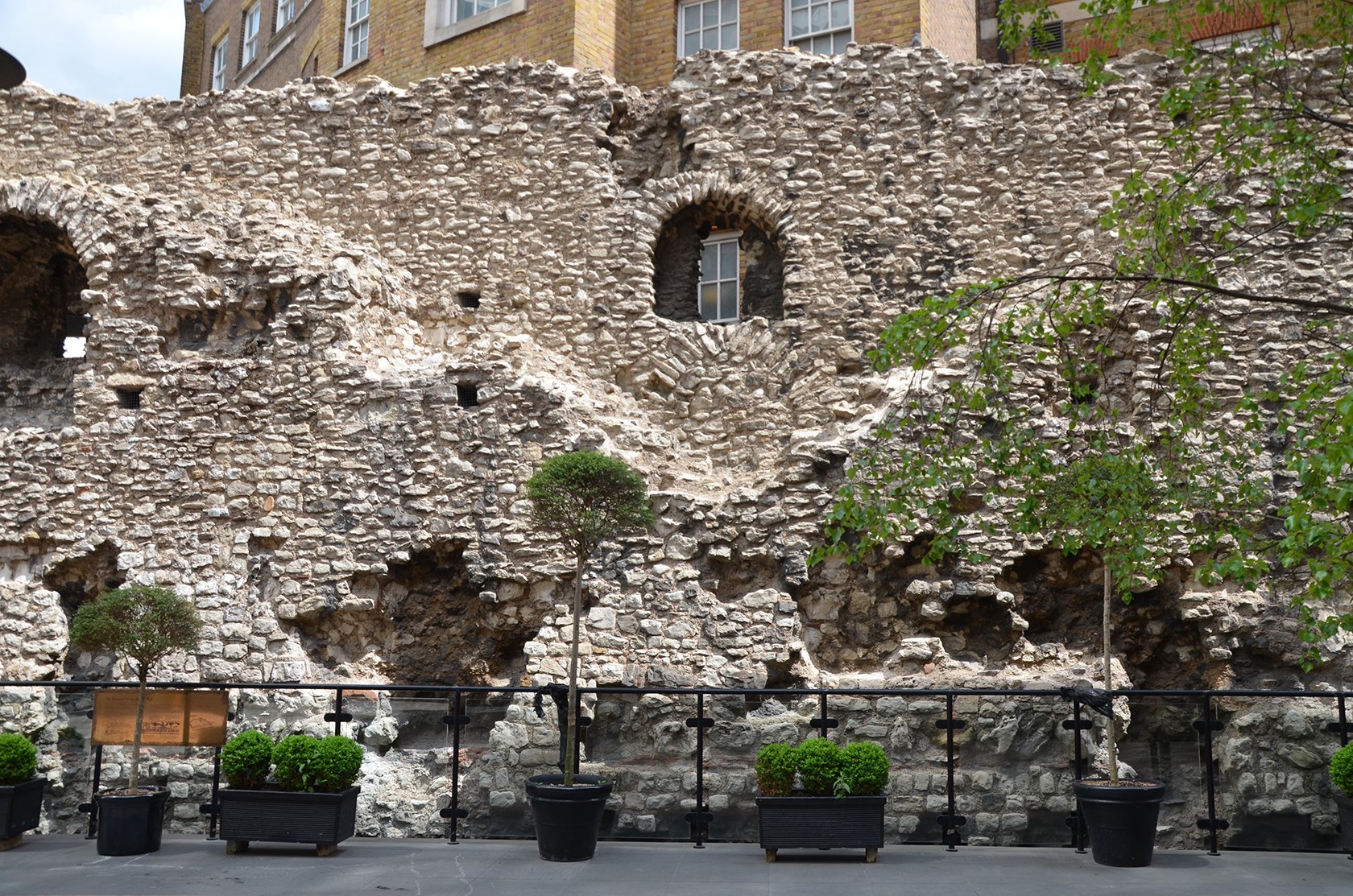
Ruins of Roman walls from Londinium (credit)
Resistance, including the incredible uprising that Queen Boudica led in 60-61 AD, would keep the Romans out until the end of the first century AD. But once they did break through, Londinium quickly became one of the most important cities in the Empire. By 120 AD, Londinium was home to about 45,000-60,000 people, and by 200 AD the vast majority of them lived within the walled fortifications that we know today as the City of London.
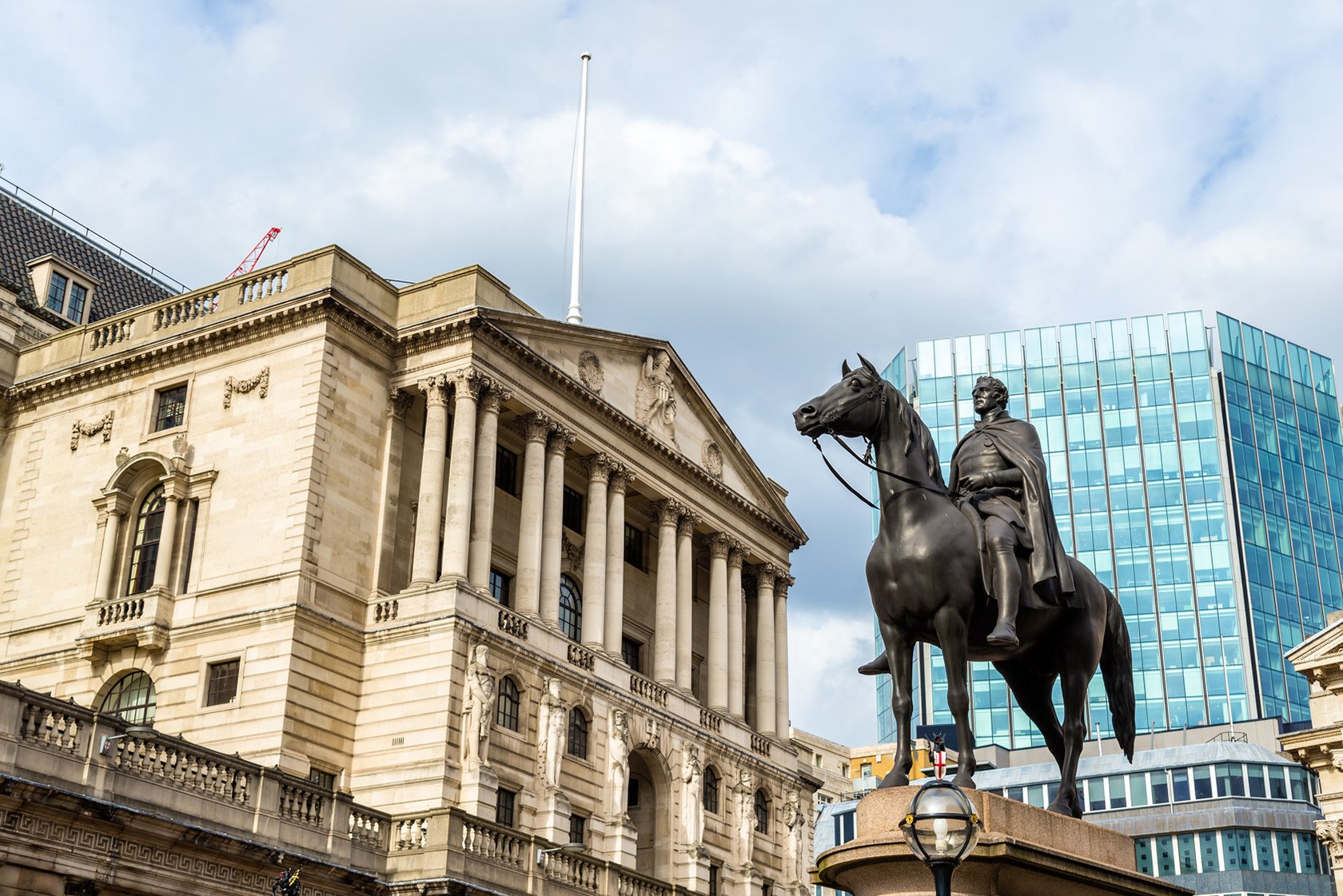
Statue of the Duke of Wellington in front of the Royal Exchange in the City of London
Over the centuries, the population fluctuated and the city limits grew beyond the walls, but the City of London is still known as “The Square Mile” because of the approximate size of the city within the walls. While it may no longer be the capital of Roman Britain, it is now a global financial center: as banks were founded and expanded during the Industrial Revolution the City, once again taking advantage of its strategic location on the Thames, became the natural hub of a growing Empire.
But the City was more than a collection of banks and brokerage houses: it is also home to some of the mose important cultural landmarks in the UK. Spending the day walking around the City means going back in time while also looking into the future, and getting a sense of how vast area we now know as Greater London came to be. The story of a city is always a human story, and it is always worth hearing.
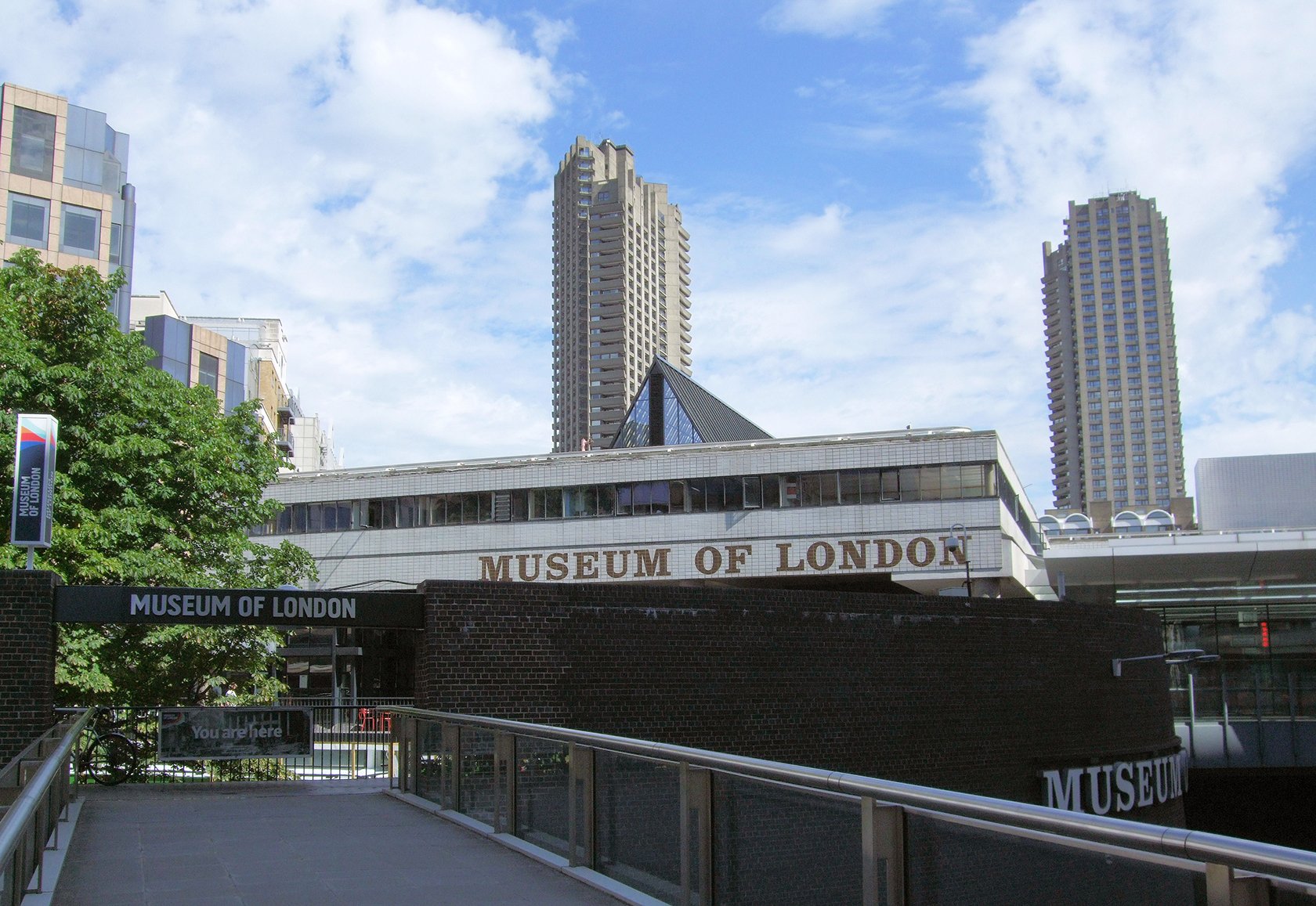
Head to the Museum of London to discover the history of the City (credit)
There’s no better place to start than the Museum of London, located in the heart of the city at The Wall, a remnant of the old Roman enclosures. Originating as the archaeological Guildhall Museum after the discovery of a Roman mosaic in 1826, the London Museum officially opened in 1912 and was moved to its current site in 1976. It still maintains a strong archaeological tradition, and visitors can walk through time, starting at 450,000 BC with the prehistoric artifacts from the Lower Thames Valley. But the Museum also tells the incredible social history of the City in nine free galleries that span the centuries. Highlights from the collections include Oliver Cromwell’s death mask, testimonies from witnesses to the Great Fire of 1666 and remnants of medieval firefighters tools, a recreation of the original Vauxhall Pleasure Gardens, and a display of 1960s fashion that coincided with Beatlemania. [UPDATE: As of December 2022, the Museum of London has closed and is relocating to nearby Smithfield Market. The museum is planned to reopen in 2026. In the meantime, you can visit still visit the Museum of London Docklands.]
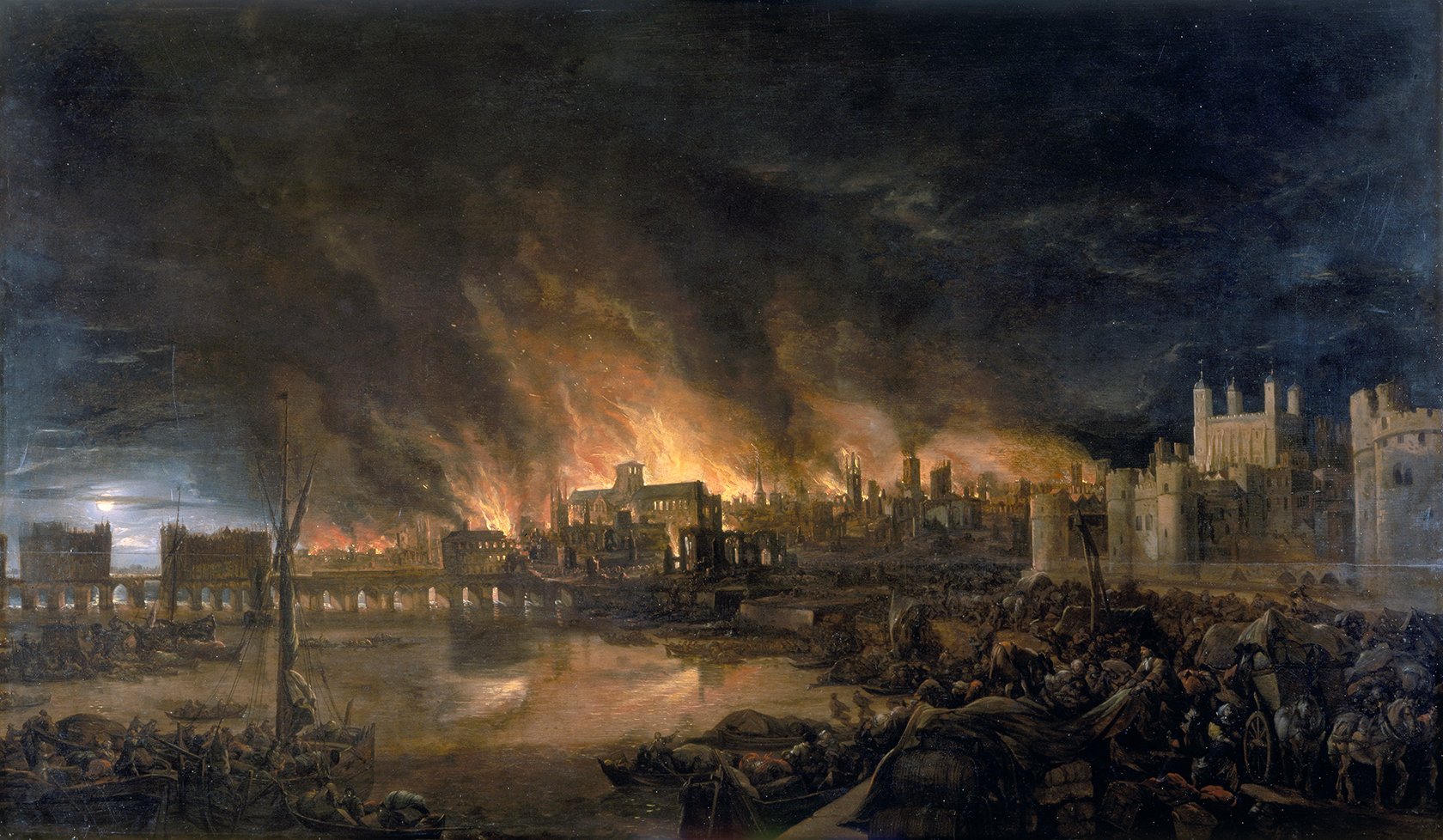
The Great Fire of London, painting c. 1675 on display at the Museum of London (credit)
Just behind the Museum of London stands the oldest hospital in Britain, St Bartholomew’s (or Barts, as it’s known to locals). It was founded in 1123 by Rahere, a monk who formed part the Court of King Henry I, and it is now known as a teaching hospital. The building is particularly significant for housing the only remaining statue of King Henry VIII in London and contains a number of important works of art from the medieval period. However, its fame probably comes from two of its most famous fictional inhabitants, Sherlock Holmes and Doctor Watson. The hospital was the site of the characters first meeting in A Study in Scarlet and more recently, the hugely popular BBC adaptation Sherlock, which filmed key scenes there, has made the hospital a must see destination for fans of the show.
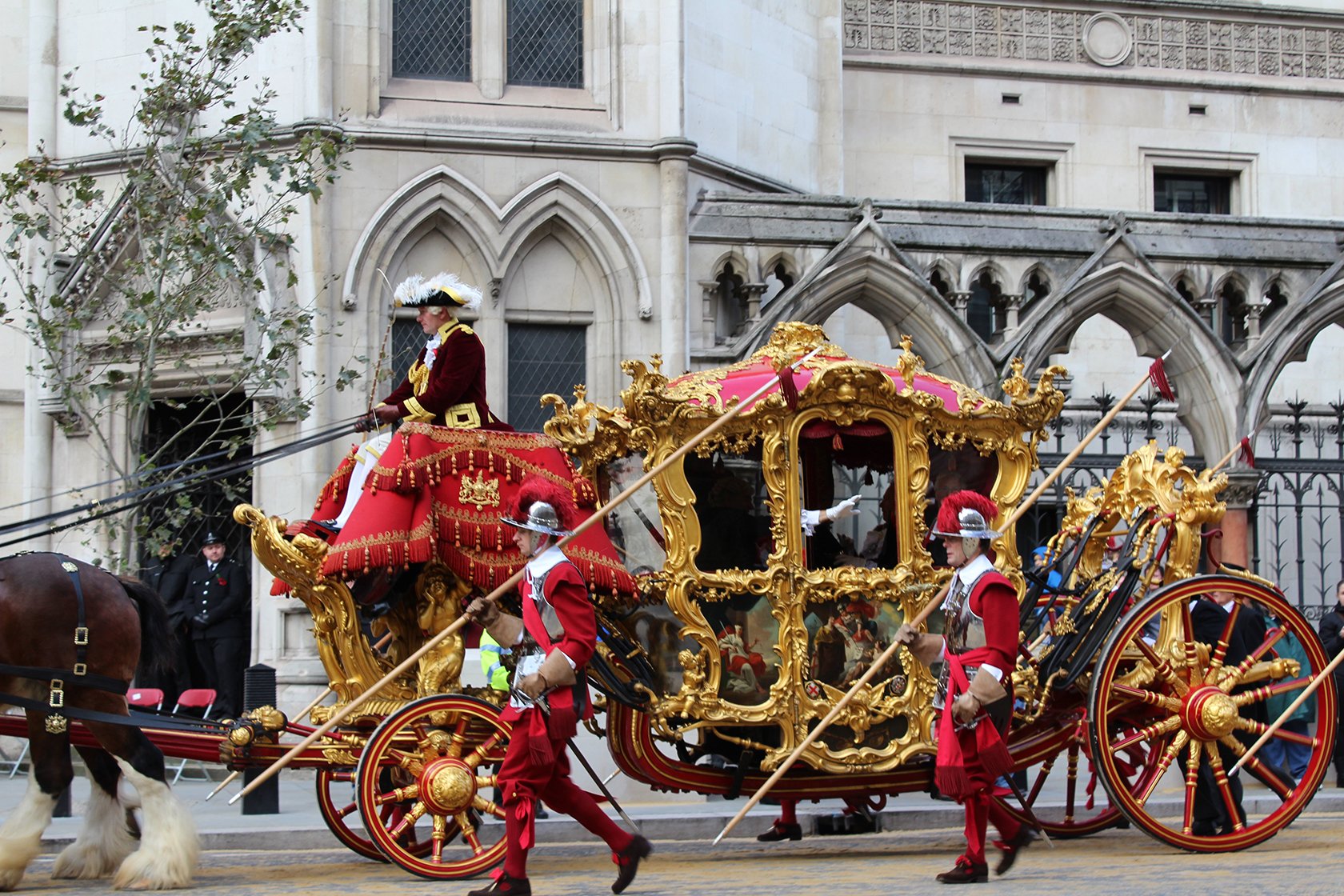
The State Coach during the Lord Mayor’s Show (credit)
The City oozes history from every corner and the cast iron dragons that mark the boundaries from Temple to the Tower of London are just one example of the history hiding in plain sight. Remember how we mentioned that the City has its own Mayor? The title of Lord Mayor of London may be a ceremonial one now but in 1739, when Mansion House was first built, the role meant receiving emissaries from around the modern world. It’s still the seat of the Lord Mayor but it also houses one of the largest gold and silver plate collections in the world.
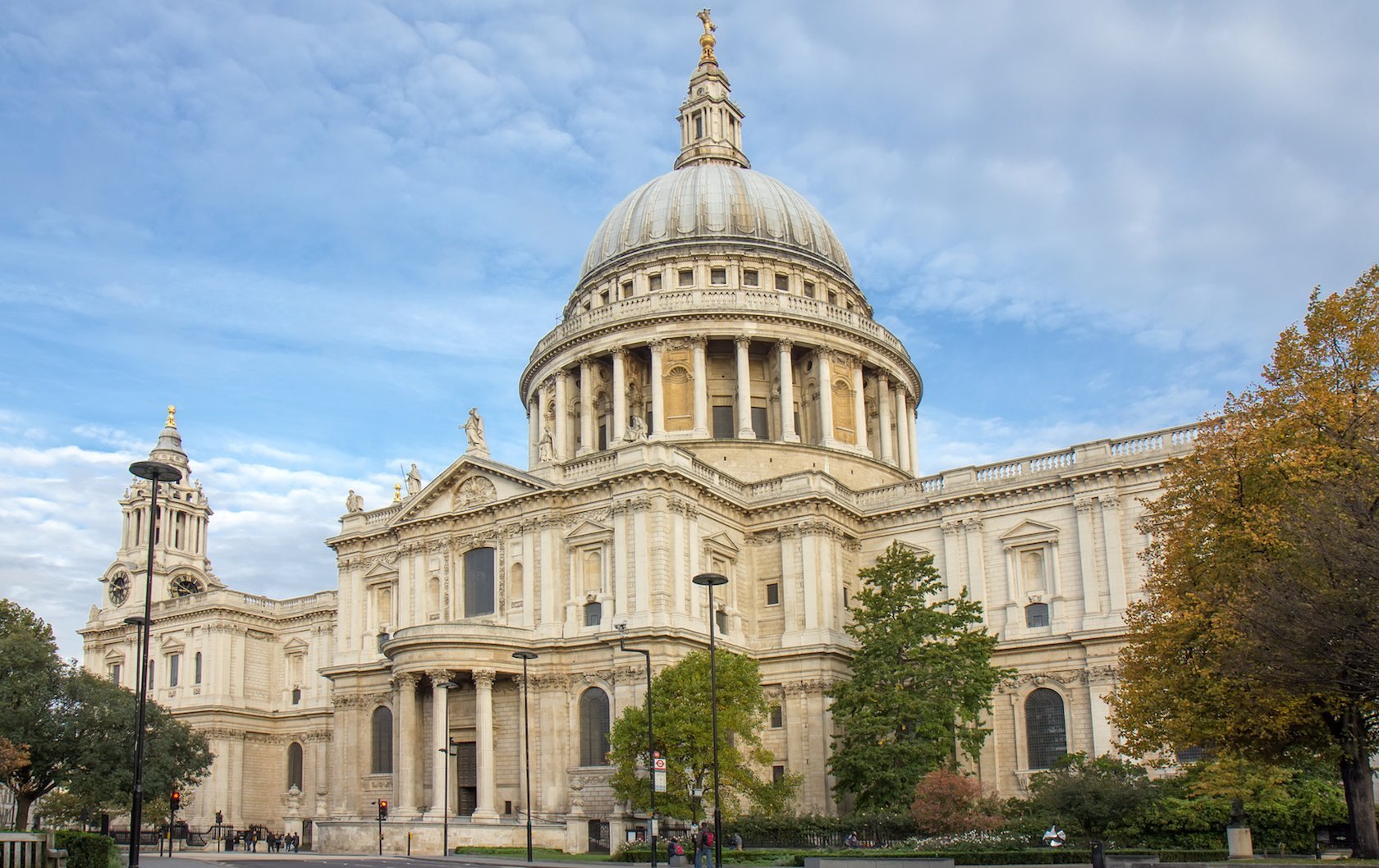
St. Paul’s Cathedral
A short walk from Mansion House leads to the Monument to the Great Fire of London, or simply The Monument, a 202 foot column designed by Sir Christopher Wren and Dr Robert Hooke to commemorate the Great Fire of 1666. From there you have views that span the city skyline and the centuries, not least of which is Wren’s most famous work, St Paul’s Cathedral. Of course, it dates back to well before Wren, as the original structure on the site was founded in 604 AD. But it is his design and the distinctive dome that have made it one of the most important features of the London skyline. Nowadays it anchors the smaller City of London alongside modern buildings such as The Gherkin, which offer another chance to see the City (and the city) from above.
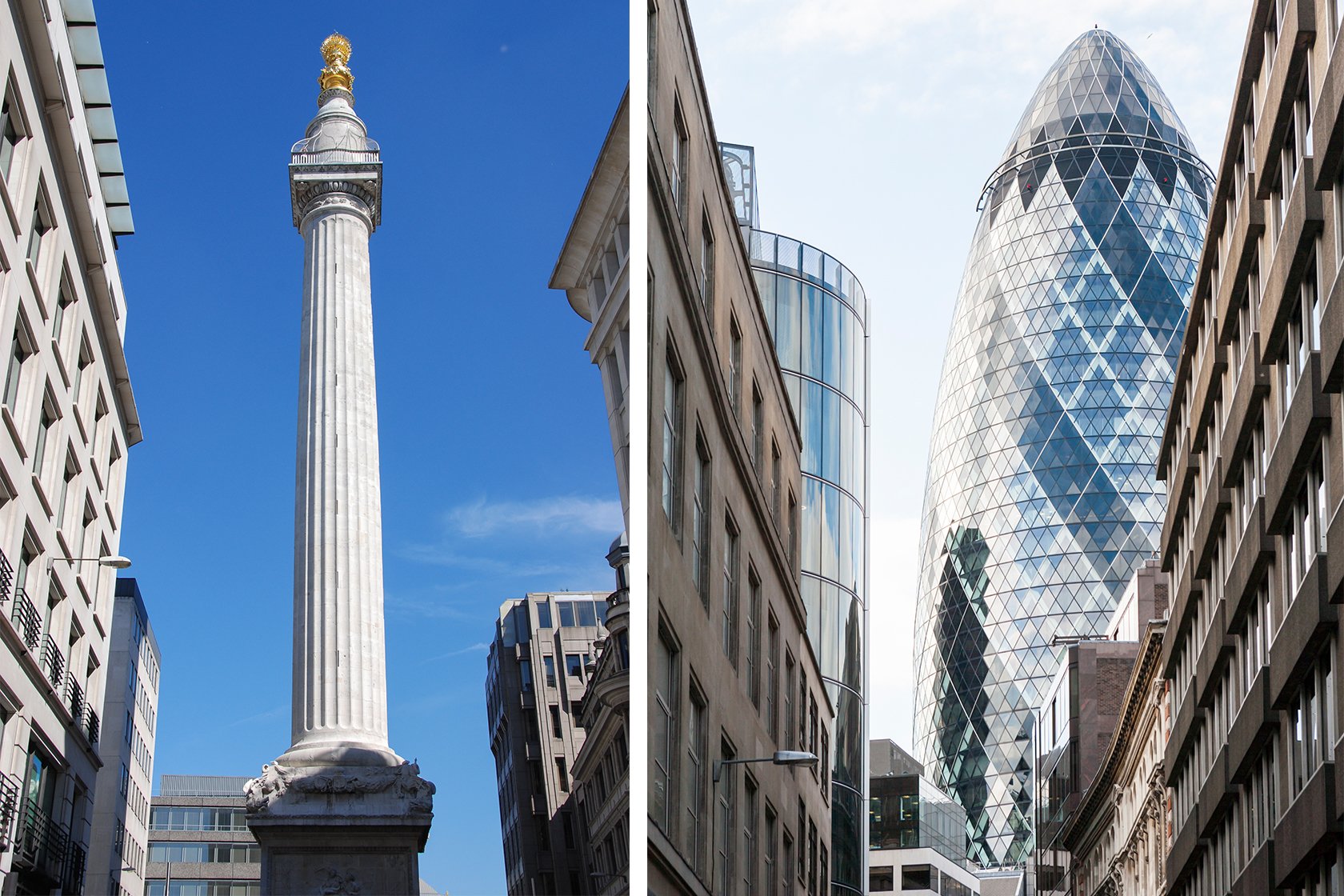
LEFT: The Monument / RIGHT: 30 St Mary Axe, called the Gherkin
One of the most enjoyable parts of discovering the City of London are all of the quirky bits of history that you’ll find in the most unlikely little corners. Explore the Leadenhall Market, which dates back to 1321 and which is built on what was originally the center of Roman Londinium. Throughout the centuries it has stood as one of the most important centers for commerce and food trading and its elegant glass and wrought iron structure (thanks to a Victorian era makeover) now houses chic boutiques and trendy restaurants. Be sure to check out Old Tom’s bar, named after Leadenhall Market’s most famous inhabitant, a Belgian duck who escaped his fate as paté in the 19th century and went on to live to be almost 38 years old.
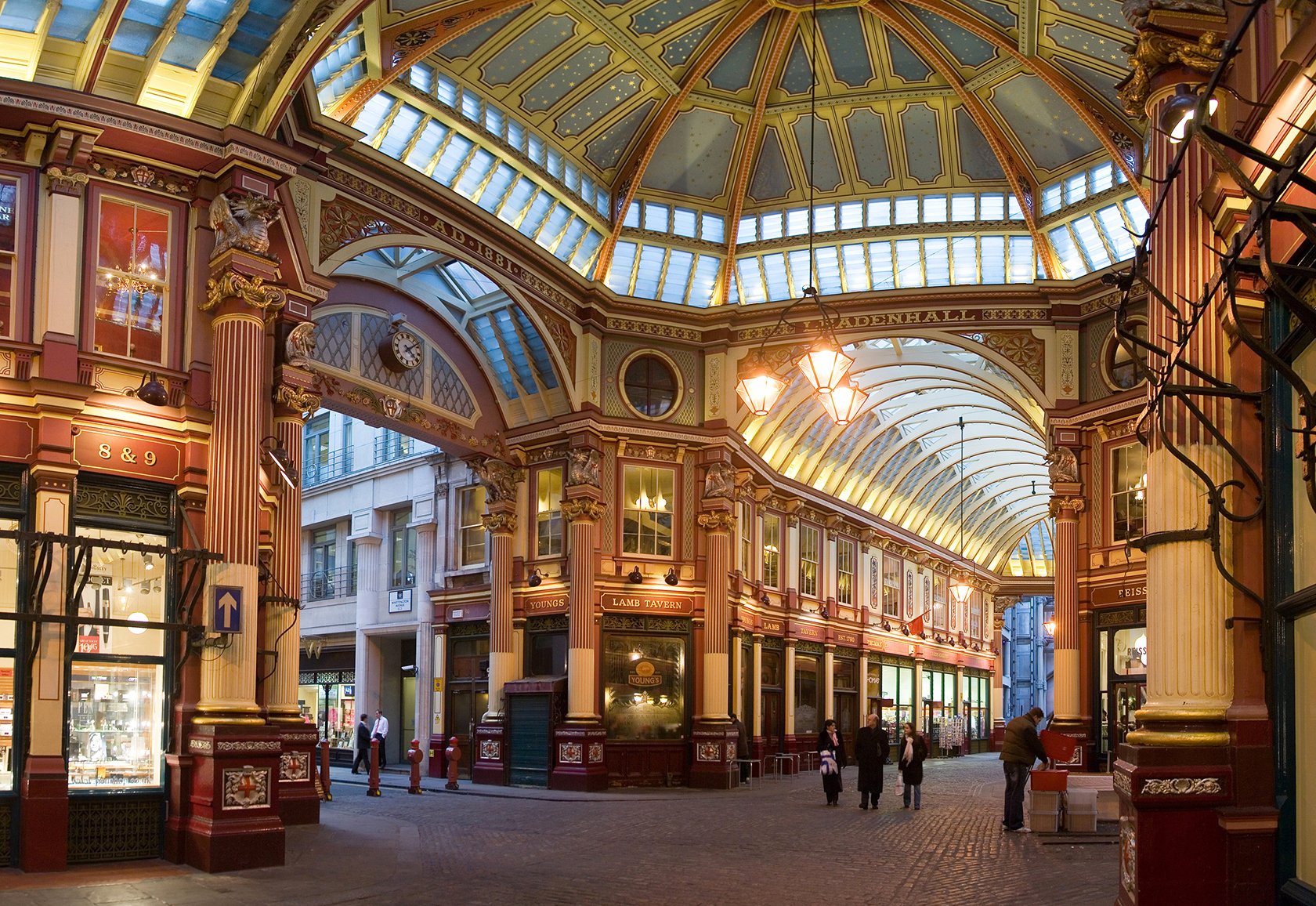
Colourful Leadenhall Market (credit)
If that’s not enough history for you, make your way over to Ye Olde Cheshire Cheese on Fleet Street, perhaps the oldest pub in the City of London, although it was rebuilt after the Great Fire of 1666. The pub has hosted scores of famous writers, artists and a grey parrot named Polly, who lived there for about 40 years. Upon renovations, a number of suggestive tiles were discovered in an upstairs area of the Cheshire Cheese that indicate it may have been used as a brothel. Those tiles were generously donated to the Museum of London, which can only mean one thing. We’re just going to have to start all over, and get to know the City of London a little more!
